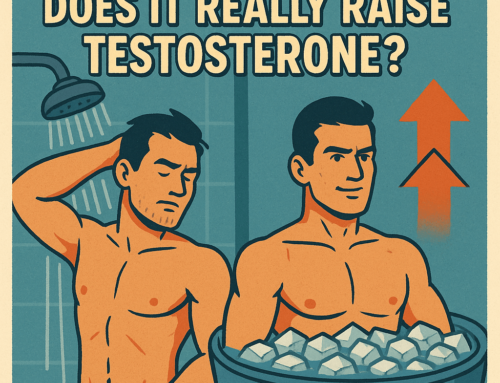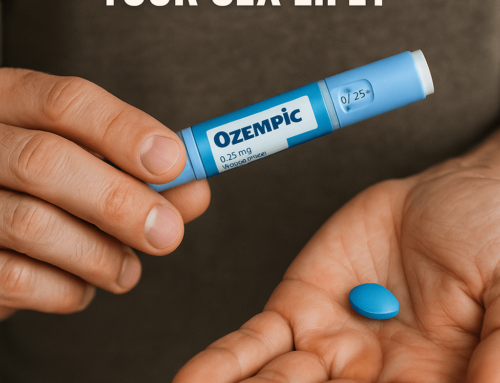In today’s blog post, we are going to discuss all things testosterone. I will cover what testosterone is, why it is physiologically important, the different testosterone levels by age, causes of low testosterone, symptoms of low testosterone, and when to seek treatment (and what to expect when you are seeking testosterone replacement therapy). I hope that after reading this, you will have a better understanding of the importance of testosterone, why people seek treatments, and the benefits they experience after starting testosterone replacement therapy.
What is Testosterone?
Testosterone is the primary sex hormone in males. It plays a role in the development of the testes and prostate. It also plays a large role in muscle mass development, hair growth, sex drive, energy, and bone mass. As you can see by its function, it is a critical hormone in men. Testosterone has also been shown to lower common inflammatory markers in the body, which can lead to an improvement in generalized aches and pains. Testosterone levels in men peak during puberty and begin to wane around 30 years of age. Generally, testosterone levels in men decrease 1-2 percent after age 30 but can be as early as 25. Many things affect testosterone levels in men. Testosterone levels naturally decrease as we age due to the aging process itself.
Testosterone Levels in Men by Age and What Affects Testosterone Levels
Testosterone levels vary widely depending on age. Below is a list of average total testosterone levels based off of age range:
- 17-20 – 300-1200
- 21-29 – 290-1100
- 30-39 – 270-970
- 40-49 – 252-916
- 50-59 – 215-878
- 60-69 – 196-859
- 70-79 – 156-819
As you can see, there is quite a range in every age category. This makes it hard to determine a “normal” testosterone level for an individual. What is normal for you may not be a normal level for the next patient. Every human body is different. The biggest factor for natural testosterone levels is genetics; some people are genetically predisposed to having higher testosterone levels than others. But there are various causes of low testosterone. Major factors that decrease testosterone levels include lack of sleep, high-stress levels, alcohol abuse, drug abuse, poor diet, lack of exercise, medical conditions (diabetes, cancer, etc.), genetic conditions (e.g. Kallman Syndrome, Klinefelter’s Syndrome), medications, and direct trauma to the testicles or brain/pituitary gland.
Low Testosterone: Symptoms, Diagnosis & Treatment
In the past, as men aged, most believed that their energy levels, sex drive, and overall quality of life would decrease because it is part of “getting old” and other excuses for ignoring symptoms. This is generally believed to start around the age of 30-40 and continue as men age. Now that there are multiple medical facilities offering hormone replacement therapy, we are finding low testosterone is much more common than we had originally thought. The common symptoms of low testosterone are:
- Fatigue
- Low sex drive
- Poor sleep
- Low motivation
- Weight gain
- Brain fog
- Joint pain
- Irritability
- Muscle weakness
Low testosterone is diagnosed through a blood test, which is usually performed in the morning when testosterone levels are at their highest. This allows you to see your testosterone production even when it is at its peak level naturally. This data will give us a base value to build your custom testosterone replacement therapy program. Most insurance companies have a policy that two lab draws below 300 is appropriate for the diagnosis of low testosterone. These numbers are based on the American Urological Association (AUA) guidelines for low testosterone diagnosis. The caveat to this is that the AUA finds the 300 level has an evidence level of “Grade B,” and it is a moderate recommendation. Meaning, there is not strong evidence that 300 is the optimal “low testosterone” number and the recommendation for diagnosing low testosterone off a level 300 is not very strong. At Limitless Male, we take into consideration the whole patient. We examine their history and their symptoms, not just the number we find on a blood draw. Our goal is to treat your symptoms, not a number. We still treat many patients whose levels are in the 400-500 range who are symptomatic, and we see them have significant improvements in their symptoms.
Before starting treatment, we do a full medical history and additional blood work to ensure that it is safe for you to start testosterone replacement therapy. If you have specific medical conditions (heart disease, history of cancer, etc.), we may require you to consult with your primary care physician or specialist before starting treatment. The appropriate age range for testosterone replacement therapy is generally ages 21-75. One of the common questions we get is, “how long do I have to be on treatment for?”. This is a good question. We treat low testosterone as a chronic medical problem, such as diabetes. Diabetes may require life-long insulin use to manage, but for TRT, we use testosterone to replace what your body is no longer able to produce. This can be a lifelong treatment for a patient if they choose so.
What if My Testosterone Levels are 600-700, but I am Still Having Low Testosterone Symptoms?
This is a common situation that we run into at Limitless Male. Another hormonal issue we have as we age is a reduction in our natural growth hormone production. This can lead to symptoms that are very similar to low testosterone. In addition to testosterone replacement therapy, we offer peptide therapy, which can treat many conditions such as poor sleep, low sex drive, erectile dysfunction, low muscle mass, and joint pain.






